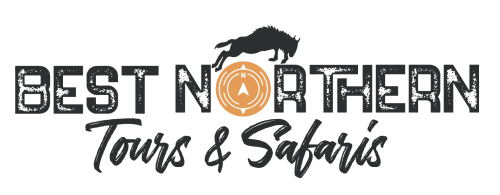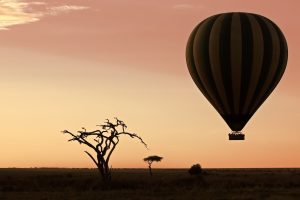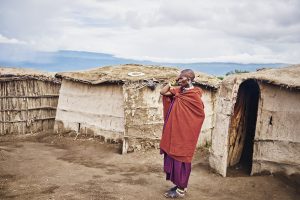Unlocking the Challenge: Can You Conquer Mount Kilimanjaro
without a Guide,
Solo?
Are you up for the ultimate adventure? Mount Kilimanjaro, the highest peak in Africa, stands tall and majestic, challenging you to conquer it, solo, without a guide. But can you unlock this daunting challenge?
Embarking on a solo expedition to Mount Kilimanjaro requires careful planning, exceptional physical fitness, and mental fortitude. You will navigate through diverse landscapes, from lush rainforests to barren alpine deserts, each step bringing you closer to the summit. But going solo means you’ll have to rely solely on your own skills, knowledge, and decision-making abilities to overcome the obstacles that lie ahead.
While climbing Kilimanjaro without a guide offers a sense of independence and adventure, it also comes with increased risks. The mountain’s unpredictable weather, altitude sickness, and challenging terrain can present serious hazards. Without a guide’s expertise, you must be prepared to navigate treacherous trails and handle emergencies on your own.
In this article, we will explore the pros and cons of conquering Mount Kilimanjaro solo, without a guide. We’ll provide you with practical tips, insights, and real-life stories from experienced climbers to help you make an informed decision. So, are you ready to take on the challenge? Let’s find out.
Reasons for climbing Mount Kilimanjaro solo
Climbing Mount Kilimanjaro solo offers a unique sense of adventure and personal accomplishment. Many climbers are drawn to the challenge of conquering the mountain on their own, without relying on a guide. Here are a few reasons why some choose to embark on a solo expedition:
1. Sense of independence: Climbing Kilimanjaro solo allows you to experience the mountain at your own pace, without the constraints of a group or guide. You have the freedom to choose your own route, set your own schedule, and fully immerse yourself in the journey.
2. Personal growth and self-discovery: Conquering Kilimanjaro solo can be a transformative experience. It pushes you beyond your comfort zone, testing your physical and mental limits. It provides an opportunity for self-reflection and personal growth, allowing you to discover inner strength and resilience.
3. Challenge and achievement: Climbing Kilimanjaro solo is a significant accomplishment that showcases your determination and perseverance. It’s a challenge that requires careful planning, physical fitness, and mental preparation. Reaching the summit on your own can be an incredibly rewarding experience.
However, it’s important to consider the challenges and risks associated with climbing Kilimanjaro without a guide.
Challenges of climbing Mount Kilimanjaro solo
Climbing Mount Kilimanjaro solo presents a unique set of challenges that you must be prepared to face. Here are some of the main obstacles you may encounter:
- Navigation and route finding: Without a guide, you’ll need to rely on your own navigation skills to find your way to the summit. Kilimanjaro has multiple routes, each with its own set of challenges. It’s crucial to thoroughly research and plan your chosen route to ensure you stay on track and avoid getting lost.
- Altitude sickness: Altitude sickness is a common concern when climbing Kilimanjaro. Going solo means you won’t have a guide monitoring your health or providing guidance on acclimatization. You must be aware of the symptoms of altitude sickness and have a plan in place to manage it if it occurs.
- Safety and emergencies: Climbing Kilimanjaro without a guide means you are solely responsible for your safety. You must be prepared to handle emergencies, such as injuries, illness, or extreme weather conditions, on your own. It’s crucial to have a comprehensive understanding of safety protocols and carry necessary emergency equipment.
While these challenges may seem daunting, with proper preparation and a realistic assessment of your abilities, climbing Kilimanjaro solo can still be a rewarding experience. However, it’s essential to weigh the benefits of climbing with a guide as well.
Benefits of climbing Mount Kilimanjaro with a guide
Choosing to climb Mount Kilimanjaro with a guide offers several advantages that can greatly enhance your experience. Here are a few benefits to consider:
- Expertise and guidance: A qualified guide brings extensive knowledge and experience to your expedition. They are familiar with the mountain’s terrain, weather patterns, and potential hazards. They can provide valuable guidance on route selection, acclimatization, and safety precautions.
- Safety and support: Having a guide by your side ensures that you have someone to rely on in case of emergencies. They can provide immediate assistance in case of injuries or illness. Guides are trained to monitor climbers for signs of altitude sickness and can help you make decisions regarding your health and safety.
- Logistics and organization: Climbing Kilimanjaro involves complex logistics, such as obtaining permits, arranging transportation, and coordinating equipment. A guide takes care of these logistical details, allowing you to focus on your climb. They can also arrange for porters to carry heavy equipment, easing your physical burden.
While climbing with a guide may limit your sense of independence, it can significantly increase your chances of a successful and safe expedition. But if you still decide to embark on a solo climb, here are some essential considerations and preparations.
Preparing for a solo climb – physical and mental preparation
Climbing Kilimanjaro solo requires rigorous physical training and mental preparation. Here are some key aspects to focus on during your preparation:
1. Physical fitness: Mount Kilimanjaro is a strenuous climb, and being in good physical shape is crucial. Aim to improve your cardiovascular endurance, strength, and flexibility through regular exercise, including hiking, running, and strength training. Consult with a fitness professional to develop a tailored training program.
2. Altitude acclimatization: Acclimatizing to high altitudes is essential to avoid altitude sickness. Prioritize spending time at higher elevations before your climb to allow your body to adjust gradually. Consider including shorter high-altitude hikes in your training regimen.
3. Mental resilience: Climbing Kilimanjaro solo can be mentally challenging. Develop mental resilience by practicing mindfulness, meditation, and visualization techniques. Set realistic expectations and adopt a positive mindset to overcome obstacles and stay motivated during the climb.
Remember, proper preparation is key to a safe and successful solo climb. In the next section, we’ll discuss the essential gear and equipment you’ll need for your expedition.
Essential gear and equipment for a solo climb
When climbing Kilimanjaro solo, you must be well-equipped with the necessary gear and equipment to ensure your safety and comfort. Here’s a comprehensive list of essential items you’ll need:
1. Clothing: Layered clothing is essential to regulate your body temperature. Pack moisture-wicking base layers, insulating mid-layers, and waterproof outer layers. Don’t forget to include a good quality down jacket, gloves, warm hat, and sturdy hiking boots.
2. Sleeping gear: A warm and comfortable sleeping bag rated for sub-zero temperatures is crucial for a good night’s sleep. Invest in a high-quality sleeping pad to provide insulation and cushioning.
3. Camping equipment: Bring a lightweight and durable tent, cooking stove, utensils, and a water filtration system. These items are essential for camping along the mountain trail.
4. Backpack: Choose a backpack with a capacity of at least 50-60 liters to carry all your gear. Look for a backpack with a supportive suspension system and adjustable straps for a comfortable fit.
5. Navigation tools: Carry a detailed map, compass, and GPS device to navigate your way through the mountain trails. Familiarize yourself with the route before starting your climb.
6. First aid kit: Pack a comprehensive first aid kit that includes medications for altitude sickness, bandages, pain relievers, and any personal medications you may require.
7. Food and hydration: Plan your meals and carry lightweight, high-energy snacks. Ensure you have an adequate supply of water and a water bottle or hydration bladder.
By having the right gear and equipment, you’ll be better prepared to face the challenges of a solo climb. However, it’s crucial to plan your route and navigation carefully to ensure a safe journey.
Navigation and route planning for a solo climb
When climbing Kilimanjaro solo, route planning and navigation become even more critical. Here are some key considerations to keep in mind:
1. Research the routes: Kilimanjaro offers several routes, each varying in difficulty and scenery. Thoroughly research and choose a route that suits your skill level and preferences. Consider factors such as acclimatization opportunities, trail conditions, and popularity.
2. Obtain maps and guidebooks: Acquire detailed maps and guidebooks that cover your chosen route. Familiarize yourself with the trail, potential landmarks, and key navigation points before starting your climb.
3. Use GPS devices and apps: A GPS device or navigation app can be invaluable when navigating unfamiliar terrain. Load your chosen route into the device or app and use it as a backup to your map and compass.
4. Follow trail markers: Kilimanjaro has well-marked trails, and following the trail markers is essential for staying on track. Look for painted arrows, signposts, and cairns along the route.
5. Be aware of changing conditions: Weather conditions on Kilimanjaro can change rapidly. Stay informed about the weather forecast and be prepared to adjust your plans accordingly. Keep an eye out for potential hazards, such as rockfall or avalanches.
By taking the time to plan your route and familiarize yourself with navigation techniques, you’ll be better equipped to navigate Kilimanjaro solo. However, it’s crucial to prioritize safety and be prepared for emergencies.
Safety precautions and emergency protocols for a solo climb
Climbing Kilimanjaro solo requires a heightened sense of responsibility for your own safety. Here are some crucial safety precautions and emergency protocols to follow:
1. Inform others of your plans: Share your detailed itinerary with trusted friends or family members. Provide them with information about your route, estimated timings, and emergency contacts. Check in with them regularly during your climb.
2. Monitor your health: Be vigilant about monitoring your health and well-being throughout the climb. Pay attention to the early signs of altitude sickness, such as headaches, dizziness, or nausea. If symptoms worsen, descend immediately and seek medical help if necessary.
3. Stay hydrated and nourished: Proper hydration and nutrition are vital during the climb. Drink plenty of water and consume high-energy foods to maintain your strength and stamina. Carry enough supplies to last the duration of your climb.
4. Practice safe hiking: Take precautions to minimize the risk of accidents and injuries. Use trekking poles for stability, especially on steep or uneven terrain. Pace yourself and take regular breaks to rest and recover.
5. Emergency communication: Carry a reliable communication device, such as a satellite phone or a personal locator beacon (PLB). These devices can be used to call for help in case of emergencies.
Remember, solo climbing should not be taken lightly. It’s crucial to thoroughly assess your abilities, consider the risks, and be prepared for unexpected situations. Let’s hear some personal experiences from climbers who successfully conquered Kilimanjaro solo.
Personal experiences of climbers who conquered Mount Kilimanjaro solo
Real-life stories from experienced climbers can provide valuable insights and inspiration for those considering a solo climb. Here are a few personal experiences shared by individuals who conquered Mount Kilimanjaro without a guide:
1. Emma’s story: Emma, an experienced mountaineer, shares her experience of climbing Kilimanjaro solo. She highlights the challenges she faced, including navigation difficulties and altitude sickness. Despite the obstacles, Emma emphasizes the sense of accomplishment and self-discovery she gained from the solo expedition.
2. Mark’s journey: Mark, a seasoned hiker, recounts his solo climb up Kilimanjaro. He discusses the meticulous planning and preparation he undertook, including physical training and route research. Mark reflects on the mental and physical challenges he encountered during the climb and emphasizes the importance of self-belief and determination.
3. Sarah’s triumph: Sarah, a solo female traveler, shares her inspiring journey of conquering Kilimanjaro. She discusses the initial apprehensions she had about going solo but emphasizes the empowerment and personal growth she experienced throughout the climb. Sarah encourages others to embrace the challenge and push their limits.
These personal stories highlight the diverse experiences and perspectives of climbers who successfully conquered Kilimanjaro solo. While these stories may inspire and motivate, it’s important to remember that every individual’s experience may vary. It’s crucial to assess your own abilities and make an informed decision.
Conclusion and final thoughts on climbing Mount Kilimanjaro solo
Embarking on a solo expedition to Mount Kilimanjaro is a thrilling adventure that offers a unique sense of accomplishment and self-discovery. Climbing without a guide allows you to experience the mountain at your own pace and on your own terms. However, it’s important to acknowledge the increased risks and challenges that come with going solo.
Proper planning, physical fitness, and mental preparation are essential for a successful solo climb. Thoroughly research your route, acquire the necessary gear and equipment, and develop navigation skills to ensure your safety and success. It’s also crucial to be aware of your limitations and be prepared to turn back if conditions become unsafe.
While climbing Kilimanjaro solo can be a rewarding experience, it’s important to remember that safety should always be the top priority. If you’re unsure about going solo or lack experience, consider climbing with a qualified guide who can provide expertise, support, and guidance.
Whether you choose to conquer Kilimanjaro solo or with a guide, the journey will undoubtedly be a memorable one. It’s a chance to push your limits, discover your inner strength, and experience the awe-inspiring beauty of Mount Kilimanjaro. So, are you ready to unlock the challenge and embark on this incredible adventure? The choice is yours.










